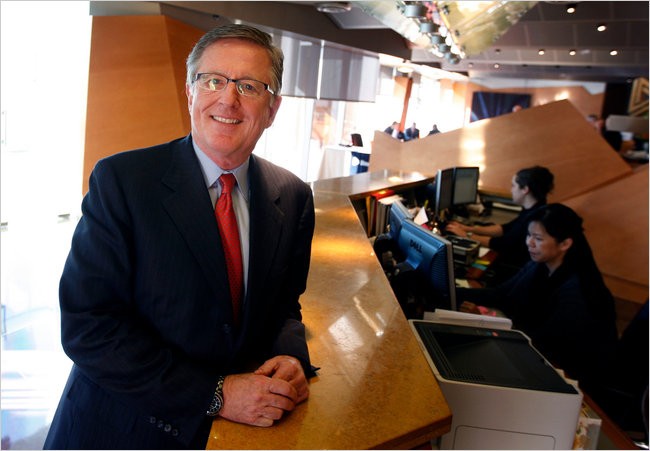The evolution of the intelligent ETF Professional Adviser IFAonline
Post on: 4 Октябрь, 2015 No Comment

Maria Merricks asks whether a rise in the number of alternative beta strategies poses a significant threat to active fund management.
“RAFI provides excess returns relative to capitalisation weighted indices of 2% to 3% per annum in developed markets and more in less efficient small and emerging markets,” says Brightman.
Invesco PowerShares is one provider offering ETFs that track the RAFI indices.
Low volatility and diversification
Research Affiliates is not the only player in the arena. S&P Indices offers the S&P Pure Value Indices, which follow a similar methodology.
The ‘value’ proposition is not the only alternative beta strategy investors can access. With the risk of volatility another concern for traditional indices, low volatility indices have proven particularly popular following recent economic troubles, according to Xiaowei Kang, director of research and design at S&P Indices.
The S&P 500 Low Volatility Index was launched in April last year, with PowerShares launching an ETF to track it in May. The PowerShares ETF has been the most successful ETF launch on record in the US, attracting more than $1bn in just eight months.
“The index weights the stocks according to their historical volatility so that the less volatile stocks carry a higher weight. The feedback we get from the market space is that it is this simplicity that is the key,” says Kang.
An equally simple methodology is ‘equal weight’, an approach intended to provide a portfolio with greater diversification. Allocating capital to traditional market cap-weighted indices inevitably leaves the investor with more exposure to stocks with a higher weighting; the top 50 companies in the S&P500, for example, represent more than 50% of the whole asset allocation.
The equal weight methodology essentially puts the same amount of capital into each single stock. The S&P Equal Weight Indices range – particularly the S&P500 Equal Weight – has attracted $10bn from ETF providers over the last 20 years.
For Kang, the simpler approach has paid off again. “Essentially, product providers need to launch products based on it, which need to be used by investors. It is much easier to market a simple index rather than something based on very complex models,” he says.
A common observation across all three approaches is that they try to achieve either lower risk or higher return. Sometimes they aim for both, says Kang.
“The low volatility index, for example, reduces risk systematically by about 30% but it also increases return. It has been well documented by academics that, across different regions in the global equity market, low volatility stocks have outperformed high volatility ones over the long term. One of the main anomalies in the financial industry is high risk not being compensated by high return,” he says.
Fees
One of the arguments in favour of active management is outperformance of the index. But with a genuine possibility of consistently higher returns relative to market cap indices, do alternative beta strategies pose a real threat to the case for active management?
Brightman certainly thinks so: “One of the most important reasons for the disappointing performance of the average active manager is high fees and expenses. Compared to active management, RAFI provides greater transparency, broader diversification, deeper capacity, lower turnover and much lower costs,” he says.
For Kang, even if alternative beta strategies do not pose direct competition, they do have the scope to challenge the active management environment.
“Typically, all active managers are benchmarked to market cap weighted indices but there have been questions from some promoters of alternative beta indices asking why active funds should not be benchmarked, for instance, against the low volatility index. It is ultimately an efficient index offering higher return with lower risk,” he says.
‘It blurs the boundaries’
The industry verdict on the ‘Intelligent’ ETF
Tom Stevenson, investment director, Fidelity
“In looking to get rid of the problems associated with a market-cap index determined by price rather than fundamental value, these indices attempt to do a similar thing to what an investment house like Fidelity does anyway. In that respect, we would agree with the approach.
“However, what an alternative index does not do – which a more active approach can – is apply an overlay of intelligent research on top. Whenever you do something in a purely mechanical way you will create anomalies and if you are not able to apply the benefit of experience you may end up with outcomes you did not expect or want.”
Elizabeth Savage, assistant fund manager, Rathbones
“This kind of product [RAFI] blurs the boundary between passive and active management and will most likely suit those looking for a low TER. However, there are a number of limitations including annual re-weighting and the inability to incorporate information relating to the macro environment. Ultimately, we prefer to allocate strategies with a more active and pragmatic approach, and we assess strategies based on their returns net of fees.”
Jonathan Lau, head of research, Brooks Macdonald Asset Management
“A market-cap weighted index is likely to be driven more by momentum, whereas a fundamentally weighted index should have a bias towards value. The approach appears to work better in some of the more ‘inefficient’ markets such as emerging market equities or in periods when momentum has gone too far and certain stocks dominate an index, such as in the 1999-2000 technology boom/bust.
“The PowerShares FTSE RAFI UK 100 fund has underperformed the index since its launch in 2007 by over 17%. The RAFI Emerging Markets fund has fared better but performance slipped towards the end of last year and now lags the MSCI Emerging Markets index by around 4% since launch in 2007.”














